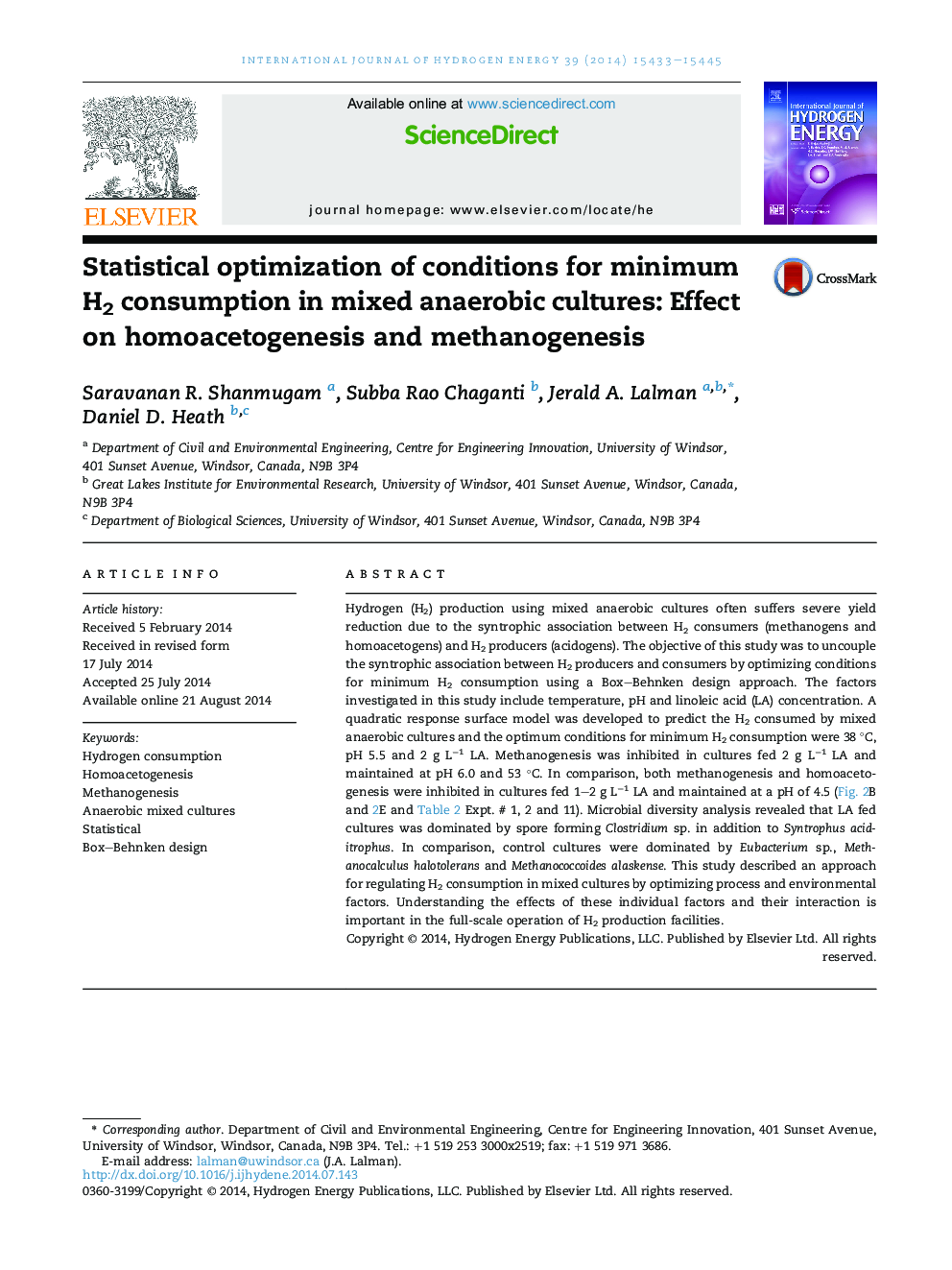| Article ID | Journal | Published Year | Pages | File Type |
|---|---|---|---|---|
| 1272381 | International Journal of Hydrogen Energy | 2014 | 13 Pages |
•Combination of low pH and high LA concentration minimized H2 consumption.•Cluster analysis showed grouping based on fermentation temperature.•Both methanogens and homoacetogens were dominant in control cultures.•Abundance of Clostridium sp. was detected in LA treated cultures.
Hydrogen (H2) production using mixed anaerobic cultures often suffers severe yield reduction due to the syntrophic association between H2 consumers (methanogens and homoacetogens) and H2 producers (acidogens). The objective of this study was to uncouple the syntrophic association between H2 producers and consumers by optimizing conditions for minimum H2 consumption using a Box–Behnken design approach. The factors investigated in this study include temperature, pH and linoleic acid (LA) concentration. A quadratic response surface model was developed to predict the H2 consumed by mixed anaerobic cultures and the optimum conditions for minimum H2 consumption were 38 °C, pH 5.5 and 2 g L−1 LA. Methanogenesis was inhibited in cultures fed 2 g L−1 LA and maintained at pH 6.0 and 53 °C. In comparison, both methanogenesis and homoacetogenesis were inhibited in cultures fed 1–2 g L−1 LA and maintained at a pH of 4.5 (Fig. 2B and 2E and Table 2 Expt. # 1, 2 and 11). Microbial diversity analysis revealed that LA fed cultures was dominated by spore forming Clostridium sp. in addition to Syntrophus aciditrophus. In comparison, control cultures were dominated by Eubacterium sp., Methanocalculus halotolerans and Methanococcoides alaskense. This study described an approach for regulating H2 consumption in mixed cultures by optimizing process and environmental factors. Understanding the effects of these individual factors and their interaction is important in the full-scale operation of H2 production facilities.
Graphical abstractFigure optionsDownload full-size imageDownload as PowerPoint slide
